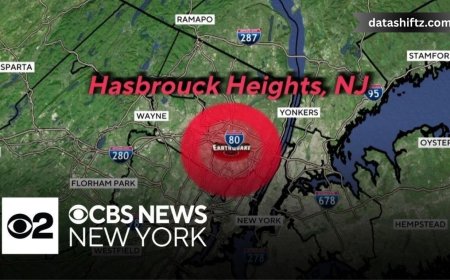Upper East Side NYC Explosion: Anatomy of a Sudden Crisis

Introduction
On the morning of August 15, 2025, Manhattan’s Upper East Side was shaken by a powerful explosion followed by a three-alarm fire near 305 East 95th Street, sending thick black smoke into the skyline and prompting a massive emergency response. The incident sparked widespread concern across New York City—as residents sought answers while first responders battled the blaze.
In this comprehensive blog post, we’ll explore the incident's chronology, emergency response, impacts, underlying issues around gas safety and aging infrastructure, and what the event reveals about urban risk. Structured with headings, tables, and lists, this post aims to provide clarity and context to serve both concerned residents and the broader community.
Incident Overview
What Happened?
-
Time and Location: The explosion occurred shortly after 10:04 a.m. ET at a six- or seven-story red-brick apartment building—305 East 95th Street, situated between First and Second Avenues in Yorkville on the Upper East Side.
-
Nature of the Incident: A gas buildup in the basement ignited, leading to an explosion that quickly escalated into a three-alarm blaze. Flames rapidly spread to the cockloft—the space between ceiling and roof—and upper penthouse levels of the building.
-
Response Effort: Over 170 FDNY personnel and more than 100 units—including ladder trucks, EMS, and support teams—responded to the scene to contain the fire and assist with evacuations.
-
Injuries Reported: The building superintendent, present in the basement at the time, sustained minor injuries. Additionally, three firefighters were treated for minor injuries during firefighting efforts.
Data at a Glance
| Aspect | Details |
|---|---|
| Date & Time | August 15, 2025, ~10:04 a.m. ET |
| Location | 305 East 95th Street, between 1st & 2nd Aves, Manhattan’s Upper East Side |
| Building Type | Pre-war, six- to seven-story residential apartment building |
| Cause (Under Investigation) | Gas buildup in basement |
| Fire Spread | Basement → cockloft → top-floor penthouses → rooftop |
| Response | 170+ FDNY personnel, 100+ units, EMS involvement |
| Injured | Building superintendent; three firefighters—minor injuries |
Emergency Response & Communication
Rapid Mobilization
Within minutes of first reports, FDNY units arrived on site and found the rooftop engulfed in flames with extensive smoke; firefighters immediately moved to stop flame spread and secure the area.
Public Alert & Safety Measures
-
Deputy Mayor for Public Safety, Kaz Daughtry, issued warnings urging residents to avoid the block around East 95th Street until the incident was under control.
-
Nearby buildings were evacuated, especially those housing vulnerable populations, and traffic was redirected to facilitate first responder access.
Community Impact
Disruption and Anxiety
-
Skyline Visibility & Smoke: Residents far from the scene reported thick smoke visible high in the skyline, raising alarm across Manhattan.
-
Homes and Buildings Affected: The blast shook nearby structures and prompted precautionary checks for gas leaks and structural integrity.
-
Public Transport Impacts: With the explosion near the Q line’s 96th Street station, service delays and traffic were reported.
-
Media and Social Buzz: The event was widely shared on social media, with footage of smoke plumes and emergency vehicles flooding timelines.
Infrastructure Risks in Aging Buildings
What This Incident Highlights
1. Gas Safety in Century-Old Structures
This pre-war structure, likely built over 100 years ago, reflects the city's broader vulnerability to worn or corroded gas infrastructure—a common thread in similar incidents.
2. Common Risks in Historic Neighborhoods
Yorkville and its surroundings, rich in architectural history, face challenges balancing preservation with modern safety needs—an urgent consideration as buildings age.
3. Broader Emergency Patterns
Past UES incidents include manhole fires and steam explosions due to infrastructure strain—though unrelated to this event, they paint a broader picture of urban risk.
Lessons and Takeaways
What Residents and Authorities Should Learn
-
Prioritize Building Inspections: Older buildings require regular checks of gas lines and ventilation systems.
-
Improve Early Detection Systems: CO and gas leak alarms are essential in basements and common areas.
-
Strengthen Public Information Channels: Residents should know whom to alert and how quickly to respond if suspicious smells or noises occur.
-
Support First Responders: Ensure quick access routes, updated tools, and clear communication for emergencies.
-
Urban Planning for Resilience: NYC should balance historic preservation with proactive infrastructure upgrades—critical in safeguarding aging neighborhoods.
Conclusion
The Upper East Side explosion on August 15, 2025, stands as a sobering reminder of urban vulnerabilities tied to aging infrastructure. Yet it also showcases the strength of NYC’s emergency response network and the community’s resilience under stress.
While the immediate threat has been contained—with no fatalities reported—the incident underscores the need for ongoing vigilance, infrastructure modernization, and transparent crisis communication. For residents and policymakers alike, this event offers an urgent call to ensure safety in the homes and streets of one of New York’s most cherished neighborhoods.






























